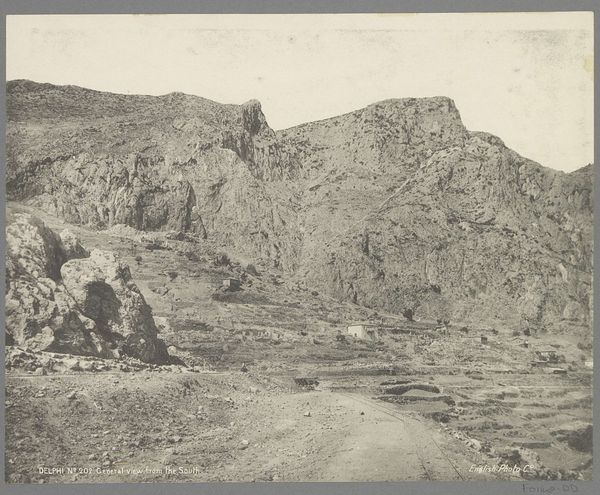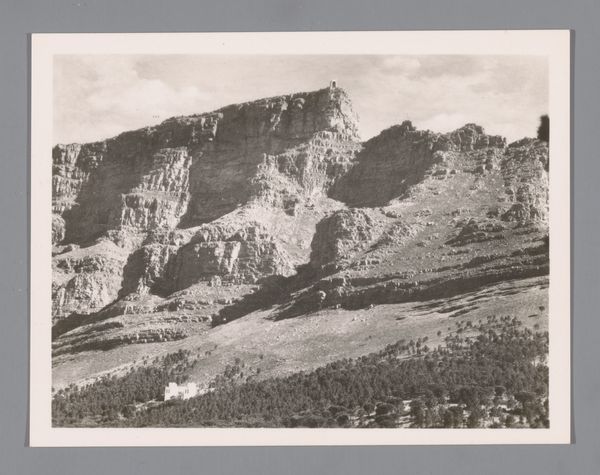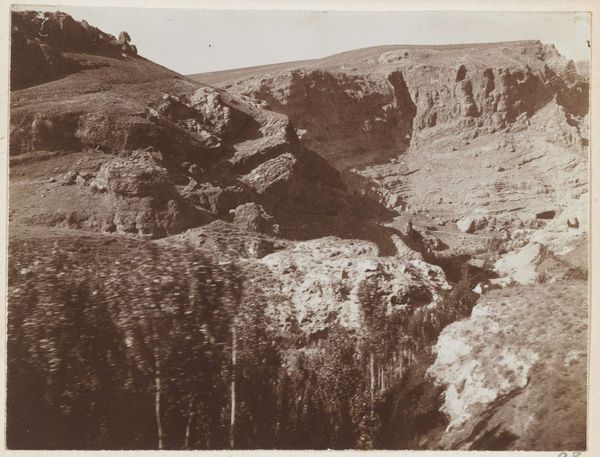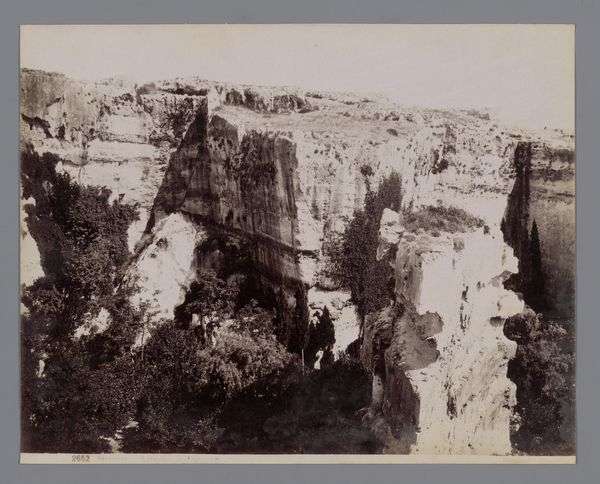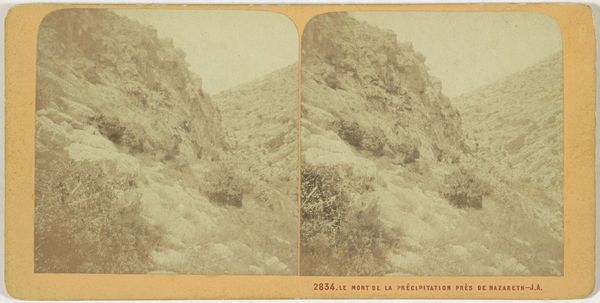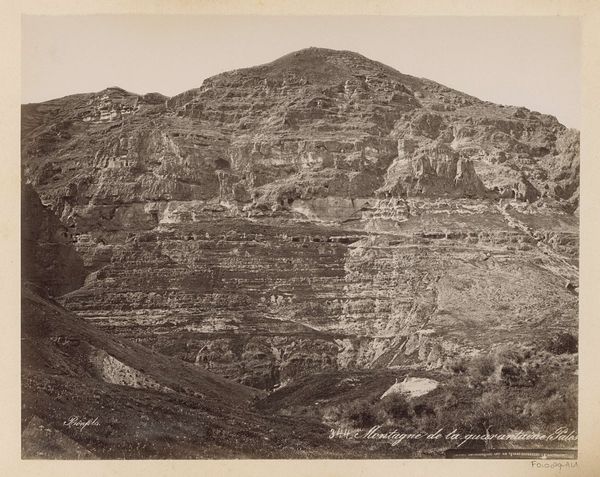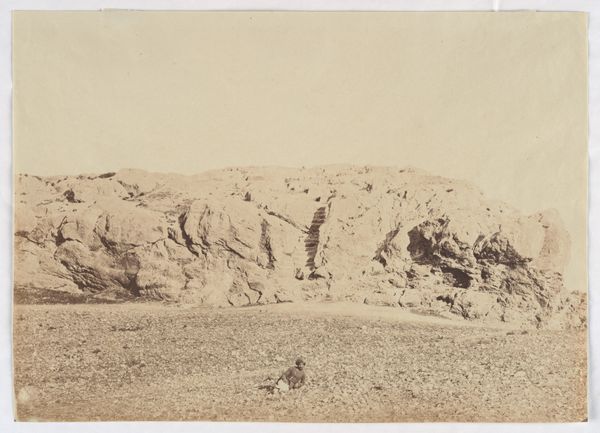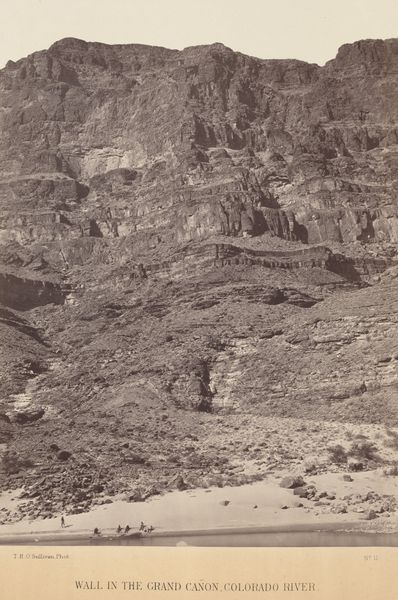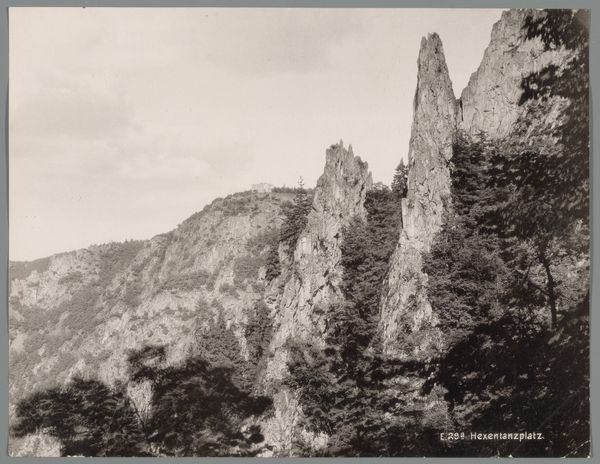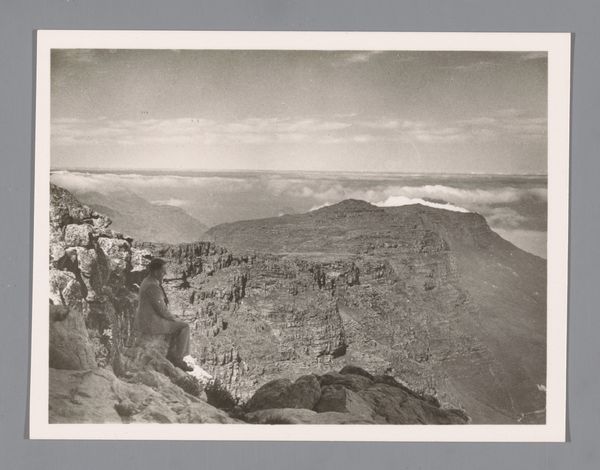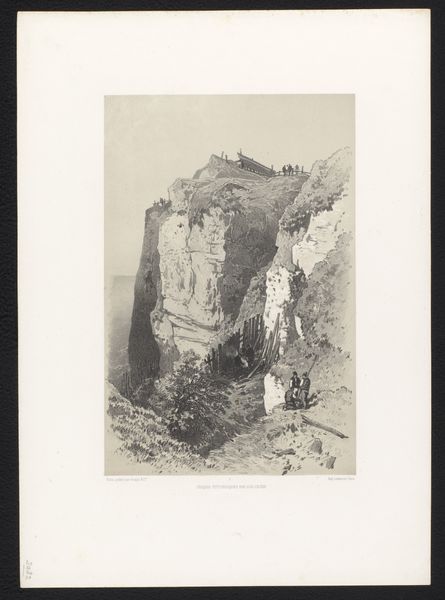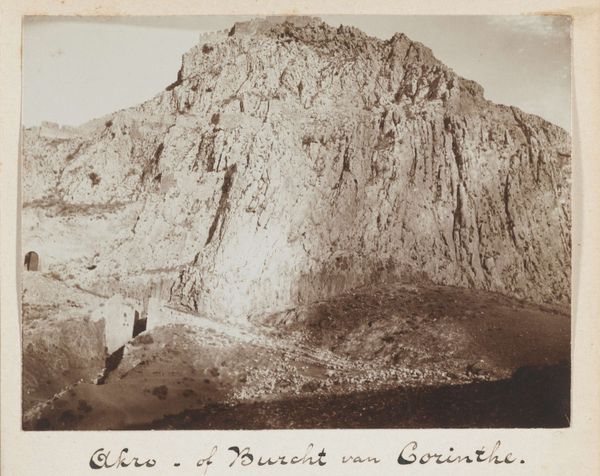
Dimensions: height 162. mm, width 220 mm
Copyright: Rijks Museum: Open Domain
Editor: Here we have Giovanni Crupi's "Gezicht op Castelmola," a gelatin silver print likely made between 1865 and 1875. It strikes me as quite monumental, a landscape seemingly untouched. How would you interpret this work within its historical context? Curator: It's a compelling question. In this period, landscape photography often served more than just aesthetic purposes. Think about the rise of tourism and the need to document and promote locations like Castelmola. How do you see that potentially influencing Crupi’s work here? Editor: So, beyond capturing beauty, this could have been used to encourage tourism, to portray Italy as a desirable destination. I guess it’s not just a record, it’s an advertisement of sorts? Curator: Precisely. Consider, too, the developing national identity of Italy during this period. Photography played a role in shaping perceptions and constructing a unified image of the country, emphasizing certain landscapes and historical narratives over others. Does this perspective change your initial reading of the work? Editor: Definitely. I was so focused on the visual impact, I overlooked the potential political and social implications behind its creation and distribution. I hadn’t thought about how choices of location and style can contribute to a broader national narrative. Curator: And Crupi, as a photographer, would have been acutely aware of the power his images held in shaping public perception. He wasn't just recording reality; he was actively constructing it for a specific audience and purpose. Editor: It’s fascinating how much history and intention can be embedded in a single image. Now, looking at it again, it seems so much more deliberate. Thank you for opening my eyes to the complexities beyond the purely aesthetic. Curator: My pleasure. Hopefully it provided insight into considering art’s purpose.
Comments
No comments
Be the first to comment and join the conversation on the ultimate creative platform.
